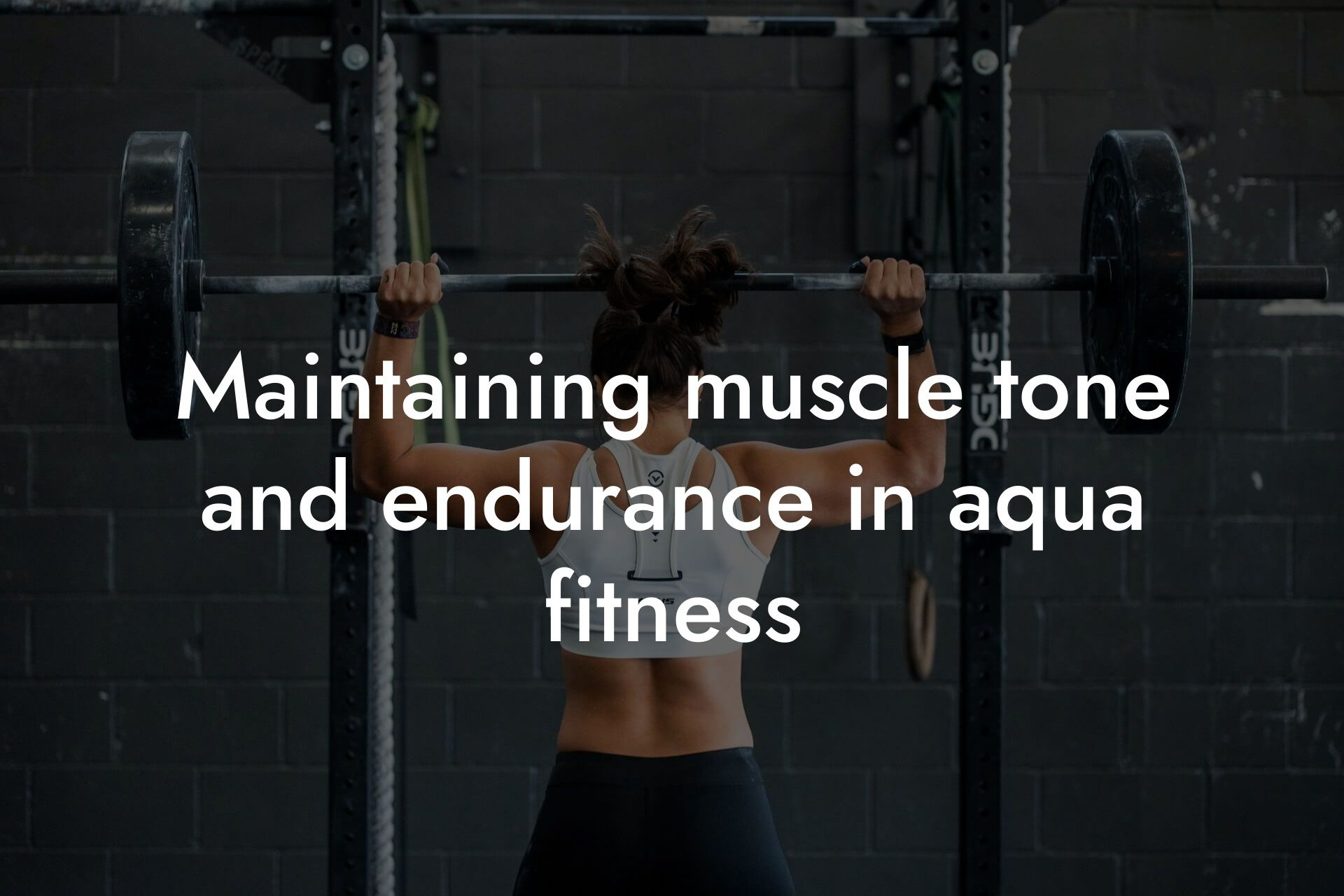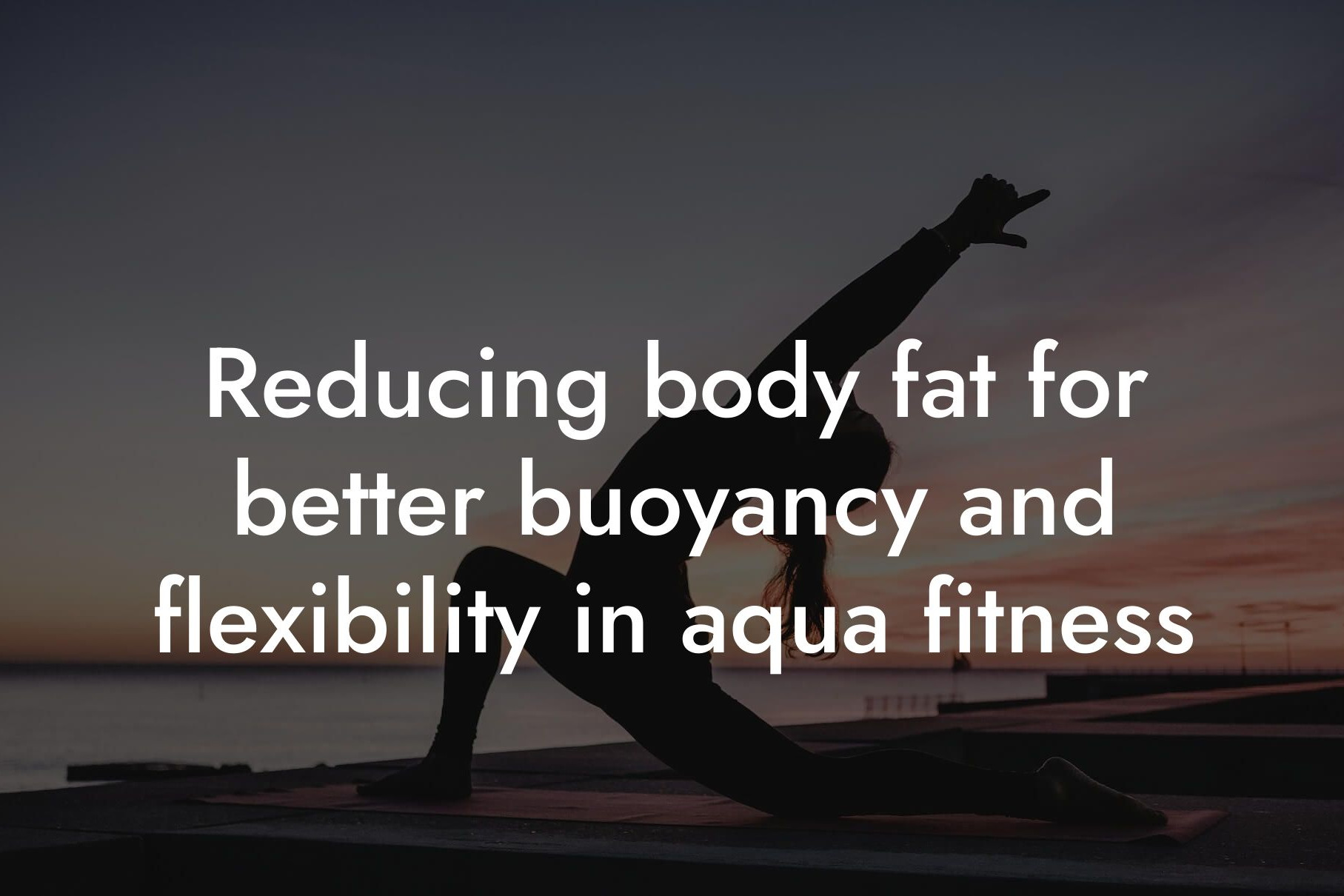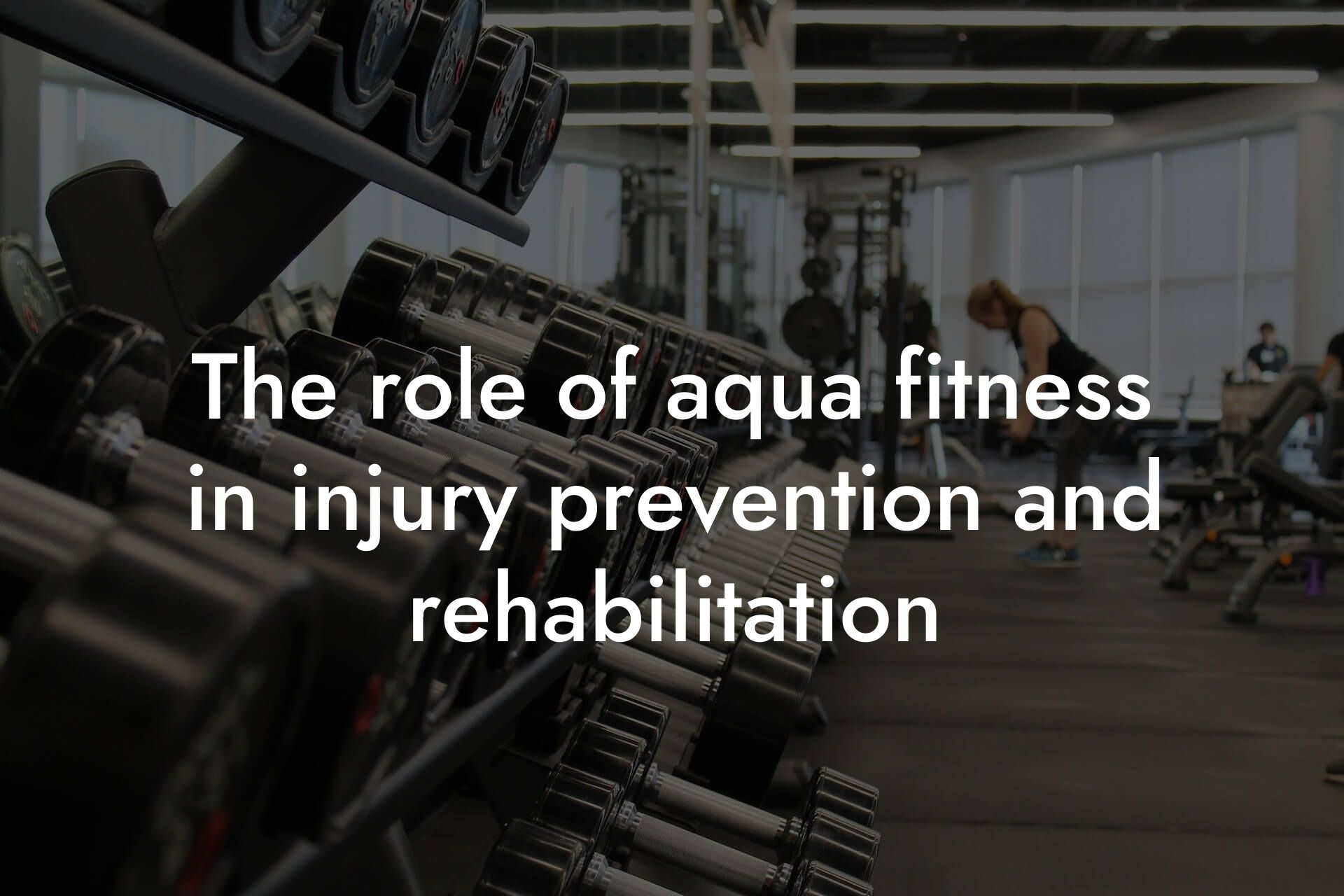As a high-earning professional, you understand the importance of maintaining a healthy and fit physique. Aqua fitness is an excellent way to improve cardiovascular health, increase flexibility, and boost overall wellness. However, to take your fitness journey to the next level, it's essential to incorporate strength training into your routine. In this article, we'll provide you with comprehensive strength training tips to complement your aqua fitness routine, helping you achieve a stronger, leaner, and more toned body.
Table of Contents
- Why Strength Training is Crucial for Aqua Fitness Enthusiasts
- Setting Strength Training Goals for Aqua Fitness Enthusiasts
- Choosing the Right Strength Training Exercises for Aqua Fitness Enthusiasts
- Creating a Strength Training Routine for Aqua Fitness Enthusiasts
- Incorporating Progressive Overload for Aqua Fitness Enthusiasts
- Tracking Progress and Adjusting Your Strength Training Routine
- Frequently Asked Questions
Why Strength Training is Crucial for Aqua Fitness Enthusiasts
While aqua fitness is an excellent way to improve cardiovascular health, it may not provide the same level of resistance as strength training exercises. This can lead to a lack of muscle growth and development, particularly in the upper body. By incorporating strength training into your routine, you can improve overall muscle mass, increase bone density, and enhance your overall physique. Additionally, strength training can help improve your performance in the water, allowing you to swim faster, longer, and more efficiently.
Setting Strength Training Goals for Aqua Fitness Enthusiasts
Before starting any strength training program, it's essential to set specific, measurable, and achievable goals. As an aqua fitness enthusiast, your goals may include improving overall muscle mass, increasing endurance, or enhancing your physique. Consider the following goals:
- Increase muscle mass in the upper body to improve swimming efficiency
- Enhance overall endurance to swim longer distances
- Improve bone density to reduce the risk of osteoporosis
- Enhance overall physique to feel more confident and self-assured
Choosing the Right Strength Training Exercises for Aqua Fitness Enthusiasts
When selecting strength training exercises, it's essential to focus on exercises that target multiple muscle groups at once. This will help improve overall muscle mass and endurance, while also saving time and reducing the risk of injury. Consider the following exercises:
- Squats: targets legs, glutes, and core muscles
- Lunges: targets legs, glutes, and core muscles
- Deadlifts: targets legs, glutes, back, and core muscles
- Bench Press: targets chest, shoulders, and triceps
- Lat Pulldowns: targets back and shoulders
- Bicep and Tricep Curls: targets arms
Creating a Strength Training Routine for Aqua Fitness Enthusiasts
When creating a strength training routine, it's essential to consider your current fitness level, goals, and schedule. Aim to train 2-3 times per week, with at least one day of rest in between. Consider the following routine:
- Monday (Chest and Triceps): Bench Press, Incline Dumbbell Press, Tricep Pushdown, Tricep Dips
- Wednesday (Back and Biceps): Deadlifts, Bent-Over Barbell Rows, Lat Pulldowns, Bicep Curls
- Friday (Legs and Shoulders): Squats, Lunges, Standing Military Press, Lateral Raises
Incorporating Progressive Overload for Aqua Fitness Enthusiasts
Progressive overload is a training principle that involves gradually increasing the weight or resistance over time to continue challenging your muscles. This is essential for muscle growth and development. Consider the following ways to incorporate progressive overload into your routine:
- Increase the weight: Gradually increase the weight you're lifting over time to continue challenging your muscles.
- Increase the reps: Gradually increase the number of reps you're performing over time to continue challenging your muscles.
- Decrease rest time: Gradually decrease the rest time between sets and exercises to continue challenging your muscles.
Tracking Progress and Adjusting Your Strength Training Routine
Tracking progress is essential to ensure you're meeting your strength training goals. Consider the following ways to track progress:
- Take progress photos: Take regular progress photos to track changes in your physique.
- Track weight and reps: Track the weight and reps you're performing to ensure you're making progress.
- Use a fitness tracker: Use a fitness tracker to track your progress and stay motivated.
Remember to adjust your strength training routine regularly to ensure you're continuing to challenge your muscles and make progress towards your goals.
Incorporating strength training into your aqua fitness routine can have a significant impact on your overall fitness and physique. By setting specific goals, choosing the right exercises, creating a routine, and incorporating progressive overload, you can improve overall muscle mass, increase endurance, and enhance your physique. Remember to track progress and adjust your routine regularly to ensure you're meeting your goals. With consistency and dedication, you can take your fitness journey to the next level and achieve the body you've always wanted.
At Tano Performance Group, we understand the importance of having a complete picture of your body composition. That's why we offer DEXA scans, providing you with a comprehensive assessment of your body fat, muscle mass, bone density, and more. Contact us today to learn more about how our services can help you achieve your fitness goals.
Frequently Asked Questions
What is the importance of incorporating strength training into my aqua fitness routine?
Incorporating strength training into your aqua fitness routine is crucial for overall fitness and physique. It helps improve muscle mass, bone density, and metabolism, which can lead to a more toned and leaner body. Additionally, strength training can enhance your overall athletic performance and reduce the risk of injury.
How does strength training complement my aqua fitness routine?
Strength training complements your aqua fitness routine by improving your muscular endurance, power, and speed. It also helps increase your resistance to fatigue, allowing you to perform at a higher intensity during your aqua fitness workouts. Furthermore, strength training can improve your posture, balance, and coordination, making you a more efficient and effective swimmer.
What are the benefits of strength training for high-earning professionals?
As a high-earning professional, incorporating strength training into your fitness routine can have numerous benefits. It can help reduce stress, increase energy levels, and improve overall physical and mental well-being. Strength training can also enhance your confidence and self-esteem, leading to a more productive and successful professional life.
How often should I incorporate strength training into my aqua fitness routine?
It's recommended to incorporate strength training into your aqua fitness routine 2-3 times per week, with at least one day of rest in between. This allows your muscles to recover and rebuild, leading to increased strength and muscle mass.
What types of strength training exercises are best for aqua fitness?
Exercises that target your upper body, such as push-ups, pull-ups, and dumbbell rows, are ideal for aqua fitness. Additionally, exercises that target your core, such as planks and Russian twists, can help improve your stability and balance in the water.
Can I do strength training exercises in the water?
Yes, you can do strength training exercises in the water! Water-based exercises, such as water jogging, aqua jogging, and resistance band exercises, can provide an effective and low-impact strength training workout.
What are some common mistakes to avoid when incorporating strength training into my aqua fitness routine?
Common mistakes to avoid include not warming up properly, not using proper form and technique, and not incorporating rest days into your routine. It's also important to avoid overtraining, as this can lead to injury and burnout.
How can I track my progress and see results from my strength training?
Track your progress by taking body measurements, weight, and body fat percentage regularly. You can also track your workout routine, including the exercises you're doing, the weight you're lifting, and the number of reps and sets you're completing.
What are some strength training exercises that target my core?
Exercises that target your core include planks, Russian twists, leg raises, and bicycle crunches. These exercises can help improve your stability, balance, and overall athletic performance.
How can I incorporate strength training into my busy schedule?
Incorporate strength training into your busy schedule by setting aside 20-30 minutes, 2-3 times per week. You can also try breaking up your workout into smaller sessions, such as 10-15 minutes in the morning and 10-15 minutes in the evening.
What are some strength training exercises that target my legs?
Exercises that target your legs include squats, lunges, deadlifts, and leg press. These exercises can help improve your power, speed, and overall athletic performance.
Can I do strength training exercises at home?
Yes, you can do strength training exercises at home! You can use free weights, resistance bands, or bodyweight exercises to get a effective workout. You can also try following along with online workout videos or fitness apps.
What are some strength training exercises that target my upper body?
Exercises that target your upper body include push-ups, pull-ups, dumbbell rows, and shoulder press. These exercises can help improve your posture, balance, and overall athletic performance.
How can I prevent injury when incorporating strength training into my aqua fitness routine?
Prevent injury by warming up properly, using proper form and technique, and incorporating rest days into your routine. It's also important to listen to your body and stop if you experience any pain or discomfort.
What are some common myths about strength training?
Common myths about strength training include the idea that it will make you bulky, that it's only for young people, and that it's too time-consuming. However, strength training can be modified to suit any fitness level, and it can be done in as little as 20-30 minutes per session.
How can I make strength training more enjoyable and engaging?
Make strength training more enjoyable and engaging by finding a workout buddy, trying new exercises and routines, and rewarding yourself for reaching your fitness goals. You can also try listening to music or podcasts while you work out, or incorporating strength training into your favorite activities, such as hiking or swimming.
What are some strength training exercises that target my glutes?
Exercises that target your glutes include squats, lunges, deadlifts, and glute bridges. These exercises can help improve your power, speed, and overall athletic performance.
How can I incorporate strength training into my aqua fitness routine if I'm a beginner?
Incorporate strength training into your aqua fitness routine as a beginner by starting with low-impact exercises and gradually increasing the intensity and difficulty. You can also try working with a personal trainer or fitness coach to develop a customized workout routine.
What are some benefits of strength training for bone density?
Strength training can help improve bone density by stimulating the growth of new bone tissue and increasing muscle mass. This can reduce the risk of osteoporosis and fractures, particularly in older adults.
How can I make strength training a habit?
Make strength training a habit by scheduling it into your daily routine, finding a workout buddy, and rewarding yourself for reaching your fitness goals. You can also try tracking your progress and celebrating your successes along the way.
What are some common mistakes to avoid when doing strength training exercises?
Common mistakes to avoid when doing strength training exercises include not using proper form and technique, not warming up properly, and not incorporating rest days into your routine. It's also important to avoid overtraining, as this can lead to injury and burnout.
How can I incorporate strength training into my aqua fitness routine if I have a injury or disability?
Incorporate strength training into your aqua fitness routine if you have an injury or disability by modifying exercises to suit your needs and abilities. You can also try working with a personal trainer or fitness coach to develop a customized workout routine.
What are some benefits of strength training for metabolism?
Strength training can help improve metabolism by increasing muscle mass, which can help your body burn more calories at rest. This can lead to weight loss and improved overall health and well-being.
Here are some related articles you might love...
- Maintaining muscle tone and endurance in aqua fitness
- Reducing body fat for better buoyancy and flexibility in aqua fitness
- The role of aqua fitness in injury prevention and rehabilitation
- Using DEXA scans to monitor progress in aqua fitness
- Nutrition tips for sustained energy in aqua fitness classes
- Bone density and its role in aqua fitness performance
- How body composition impacts aqua fitness performance
- Balancing strength, flexibility, and cardiovascular health in aqua fitness
- Recovery techniques for aqua fitness practitioners
Zak Faulkner
Zak Faulkner is a leading authority in the realm of physical health and body composition analysis, with over 15 years of experience helping professionals optimise their fitness and well-being. As one the experts behind Tano Performance Group, Zak has dedicated his career to providing in-depth, science-backed insights that empower clients to elevate their physical performance and overall health.
With extensive knowledge of DEXA technology, Zak specializes in delivering comprehensive body assessments that offer precise data on body fat, muscle mass, bone density, and overall physique. His expertise enables individuals to make informed decisions and achieve their fitness goals with accuracy and confidence. Zak’s approach is rooted in a deep understanding of human physiology, combined with a passion for helping clients unlock their full potential through personalised strategies.
Over the years, Zak has earned a reputation for his commitment to excellence, precision, and client-focused service. His guidance is trusted by top professionals who demand the best when it comes to their health. Whether advising on fitness programs, nutritional strategies, or long-term wellness plans, Zak Faulkner’s insights are a valuable resource for anyone serious about taking their health and fitness to the next level.
At Tano Performance Group, Zak continues to lead our Content Team revolutionising how professionals approach their physical health, offering unparalleled expertise that drives real results.




